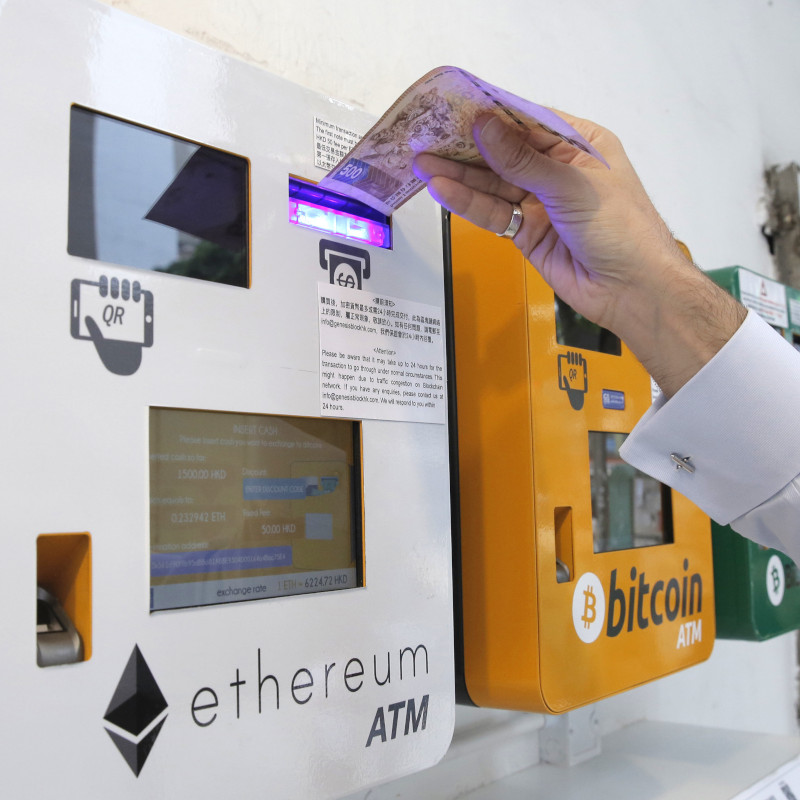For better or worse, few subjects have captured the attention of the financial world like Bitcoin.
With each wild price swing, those that believe in the digital currency and those that call it a bubble spar on financial networks like CNBC. The recent massive selloff will be no exception (Bitcoin is up more than 250% since this time last year even after factoring in recent declines). Despite its increasing acceptance by traditional markets as a novel asset class, Bitcoin is remains seen as a “party trick” asset: part speculative investment, part inflationary hedge.
But those headlines have continued to miss out on the seismic changes that blockchain technology is ushering into the financial space, challenging the hegemony of traditional brick and mortar banks. This revolution isn’t just on its way — it’s here. Regulators and tax authorities in Canada and around the world need to begin to educate themselves on the rapid development and reinvention occurring on blockchains other than Bitcoin.
The media’s endless fixation on the wild swings in price are missing the forest for the trees.
The Bitcoin network and it’s blockchain are largely restricted to the ability to do little more than securely send, receive and hold bitcoin. This is intentional as the development of the Bitcoin network has been an emphasis on security and decentralization.
The second largest digital asset, Ethereum, operates in a more dynamic way. Users can launch and utilize digital contracts on the network, allowing hundreds of people to bind themselves into financial and commercial contracts, enforceable without relying on lawyers, banks, regulators or central banks. Like many cryptocurrency projects, the first generation of these decentralized applications (DApps) was as silly as they were impactful.
Bitcoin remains seen by traditional finance as a novelty asset that will fade away and by government as only a tool for money launders.
Launching in 2017 from Vancouver based Dapper Labs, CryptoKitties was a collectable game where players could buy, sell, breed and trade unique digital cats. All of these transactions occurred on the Ethereum blockchain, meaning that once launched no individual, group, or corporation was truly in control of it. Ridiculous on its face, the DApp showed the potential to create global, scalable markets out of thin air and to have them operate 24/7 with little or no outside interference.
Since 2017, the scope of DApps has expanded and matured tremendously. Today, the largest DApps are primarily focused on financial products and the size of them is enough to rival mainstream, traditional financial institutions.
One of the largest examples is Aave. Founded in 2017 out of Switzerland, Aave allows users to deposit various digital assets into smart contract as collateral for U.S. dollar pegged “stablecoin” loans. The smart contract dictates the loan/value ratio and interest owing on a per second basis. To have the original collateral released, the user must return to the smart contract the borrowed U.S. dollar stablecoin, plus (variable) interest.
Simultaneously, Aave allows users to deposit their digital assets to a separate contract and earn per second interest on those deposits. With no lock-up periods, the user can remove their deposited funds, plus interest on demand. The borrowing and lending interest rates for assets are correlated in such a way to ensure that interest paid on deposits is always equal to or less than the interest received by the lending.
All the above is done without any agents, sales, margins, or overhead 24 hours a day, seven days a week with no downtime. Crucially, the whole process is agnostic to the size of borrowed or lent amounts. There is no difference in user experience, interest, or fees if you are borrowing $100 or $10 million. The only cost to the user is a “gas fee” required by the network to access and operate the smart contract.
As of writing, Aave currently has $7.89 billion U.S. dollars worth of digital assets locked as collateral in its smart contracts. Aave is one of dozens of new financial players completely reinventing financial markets and collateralized loans.
Another major player is Uniswap. Uniswap is a fully decentralized exchange (DEX), allowing users to exchange one digital asset for another. Unlike a traditional exchange that uses an orderbook to match buyers and sellers of a specific security, Uniswap is an automated liquidity protocol. Any user can create a market by depositing a pair of assets (in equal USD amounts) into a liquidity pool. When other users want to exchange that pair of digital tokens, they complete that exchange using the pair of tokens in the liquidity pool. Users who are providing liquidity are paid a 0.3 percent fee for each exchange, which is divided proportionally amongst the liquidity providers. If the balance of a pair of assets deviates from the original 1:1 proportion, arbitrageurs are incentivized to profit from bringing the pool back to 1:1.
Just like Aave, this provides an invaluable service to digital asset traders. Those who have assets they are not using can be paid to provide liquidity to a paired pool (and withdraw whenever the want) and market gains increased efficiency between different tokens, eliminating barrier to access.
For the week ending April 20, 2021, Uniswap exchanged $10 billion USD that week. As with Aave, this market is available worldwide, 24 hours a day, 365 days a year.
The growth of the DeFi market can tracked live on DeFi Pulse, which currently shows a total locked value across all markets of $27.2 billion.

The Ethereum network is similarly decentralized to the Bitcoin network (but in some technically different ways) and with a network upgrade projected to land at the end of 2021, the Ethereum network will eliminate the use of hardware mining to reduce its environmental impact by approximately 95%.
The promise of these new Decentralized Finance (DeFi) players is a truly global, liquid, and efficient financial system, with low fees, no overhead and no barrier to access. The World Bank estimates that 1.7 billion people worldwide remain unbanked, forced to store their wealth in cash or other physical assets, making them vulnerable to theft or government confiscation.
Digital assets offer not just a way to store their wealth securely, but equal access to a global financial system including access to capital markets they can use to start businesses and grow their quality of life. Individuals living in nations like Denmark with negative interest rates can take advantage of that and instantaneously lend their ‘free’ money to farmers in India or Pakistan with no secure access to financing.
Ethereum is laying down the internet of finance, allowing anyone globally to access markets and capital. An entrepreneurial developer can build new and more efficient ways for people to come together and see their financial needs met.
So, with all this growth and promise, where are our regulators and tax authorities? Nowhere to be seen. Does any government, provincial or federal, have a serious plan to face this financial upheaval? Can we encourage our own entrepreneurs, businesses and non-profits to find ways to become leaders in this emerging ecosystem?
It would seem the answer is no. Bitcoin and cryptocurrency remains seen by traditional finance as a novelty asset that will fade away and by government as only a tool for money launders. The implications of these new technologies are either not understood by our politicians and regulators or are being ignored in the hopes that they will simply disappear.
In a way, this isn’t surprising. Traditional institutions are loath to recognize upstart challengers to their hegemony. Decentralized finance offers lower cost, more efficient, more liquid access to global markets at a speed that traditional institutions cannot match. If they don’t start to adapt to this new world, taxpayers will be left on the hook for the inevitable bailout.
We’ve seen exactly this before. In 1995, Clifford Stoll declared in Newsweek that “no online database will replace your daily newspaper, no CD-ROM can take the place of a competent teacher and no computer network will change the way government works.”
Newsweek ran its last independent print issue on December 31, 2012.
Recommended for You

Laura David: Red pill, blue pill: Google has made its opening salvo in the AI-news war. What’s Canadian media’s next move?

The Notebook by Theo Argitis: Mark Carney’s first major tests

The Weekly Wrap: Trudeau left Canada in terrible fiscal shape—and now Carney’s on clean-up duty

Ben Woodfinden: Lament for an ‘elbows up’ nation



